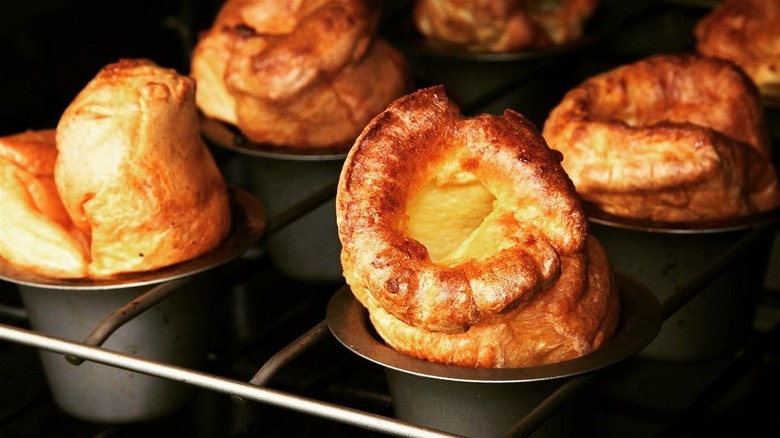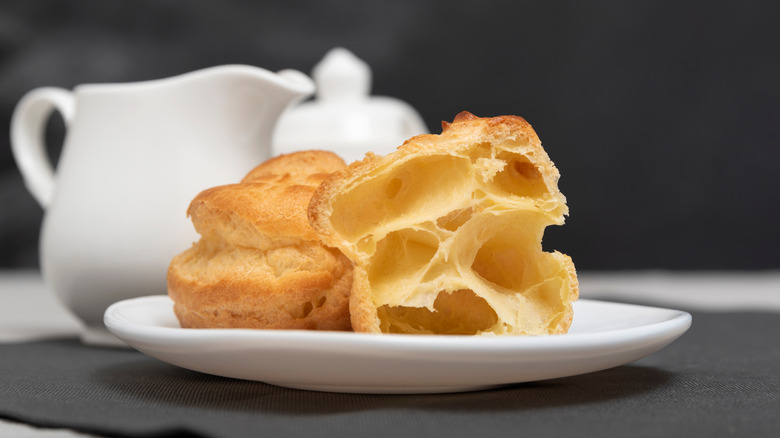The Temperature Tip To Ensure Tall Popovers Every Time
We love a dish that's served with a dash of whimsy, and what could make dinnertime more dreamy than a delicate orb of exquisitely baked dough? Simultaneously airy and crispy, popovers are light, flaky rolls with a hollow, custardy center that taste as otherworldly as they look.
Similar to Yorkshire pudding, popovers are crafted with the absence of yeast, relying instead on eggs for their impressive rise to dome-hood. When the liquid in the popover dough (which is provided by the eggs) is exposed to the high temperature of the oven, it creates an abundance of steam. Trapped by the gluten from the flour and the protein from the eggs, the steam inflates the popover, creating a tall, hollow roll with a flaky outer shell.
With the perfect popover recipe calling for only a handful of ingredients, baking them at home isn't a terribly involved process. However, for your popover to effectively pop up, the environment in which they are cooked has to be just so. Because popovers rely on steam to propel them skyward, the temperature of the oven and the popover pan, as well as the temperature of the batter, play a profound role in the rise (and potential fall) of the popover.
No cold eggs allowed
To create enough steam for the popover to inflate, both the oven and the popover pan need to be piping hot. Pre-heating the oven to 450 degrees Fahrenheit and allowing the popover pan to heat up beforehand before adding the batter ensures that the dough will heat up quickly enough to create steam and rise before the crust hardens and sets.
Because maximizing steam is the name of the game when baking popovers, it's important that even the batter be the right temperature. Unsurprisingly, popover batter made with eggs and milk pulled directly from the fridge will be colder than one made with room-temperature ingredients. Not only will room temperature batter generate steam faster than cold batter, but the cold ingredients won't meld together as well.
When room-temperature eggs are whisked together with room-temperature milk, the proteins in the egg trap tiny pockets of air, which will expand during the baking process for an even bigger and more impressive popover. When the ingredients are cold, the proteins in the egg are bound so tightly that air pockets can't form. As such, cold ingredients lead to smaller, less airy popovers. To ensure that the egg proteins are loose enough to emulsify, leave eggs out overnight to reach room temperature, or otherwise soak them in a bowl of warm water for 10 minutes.

